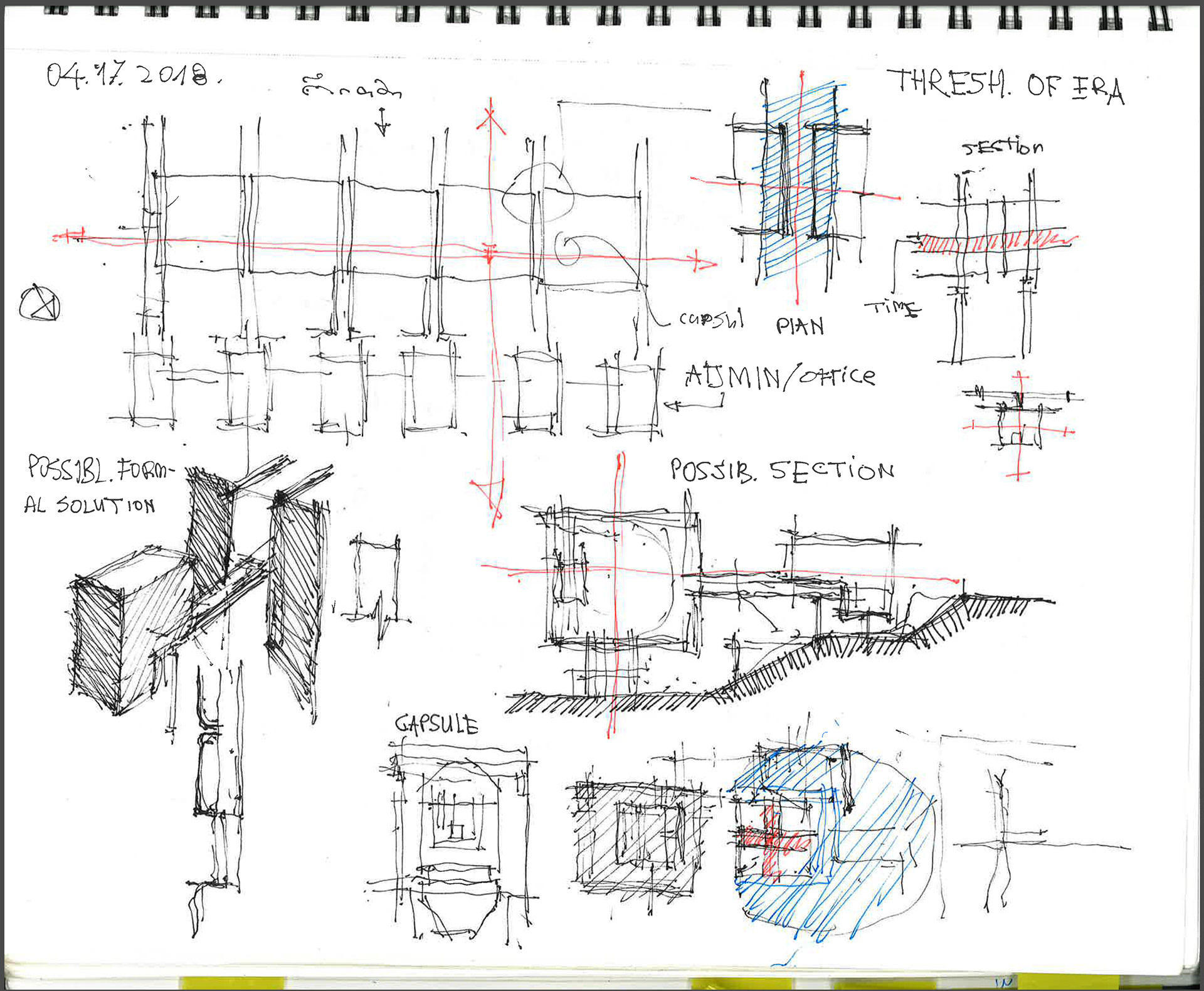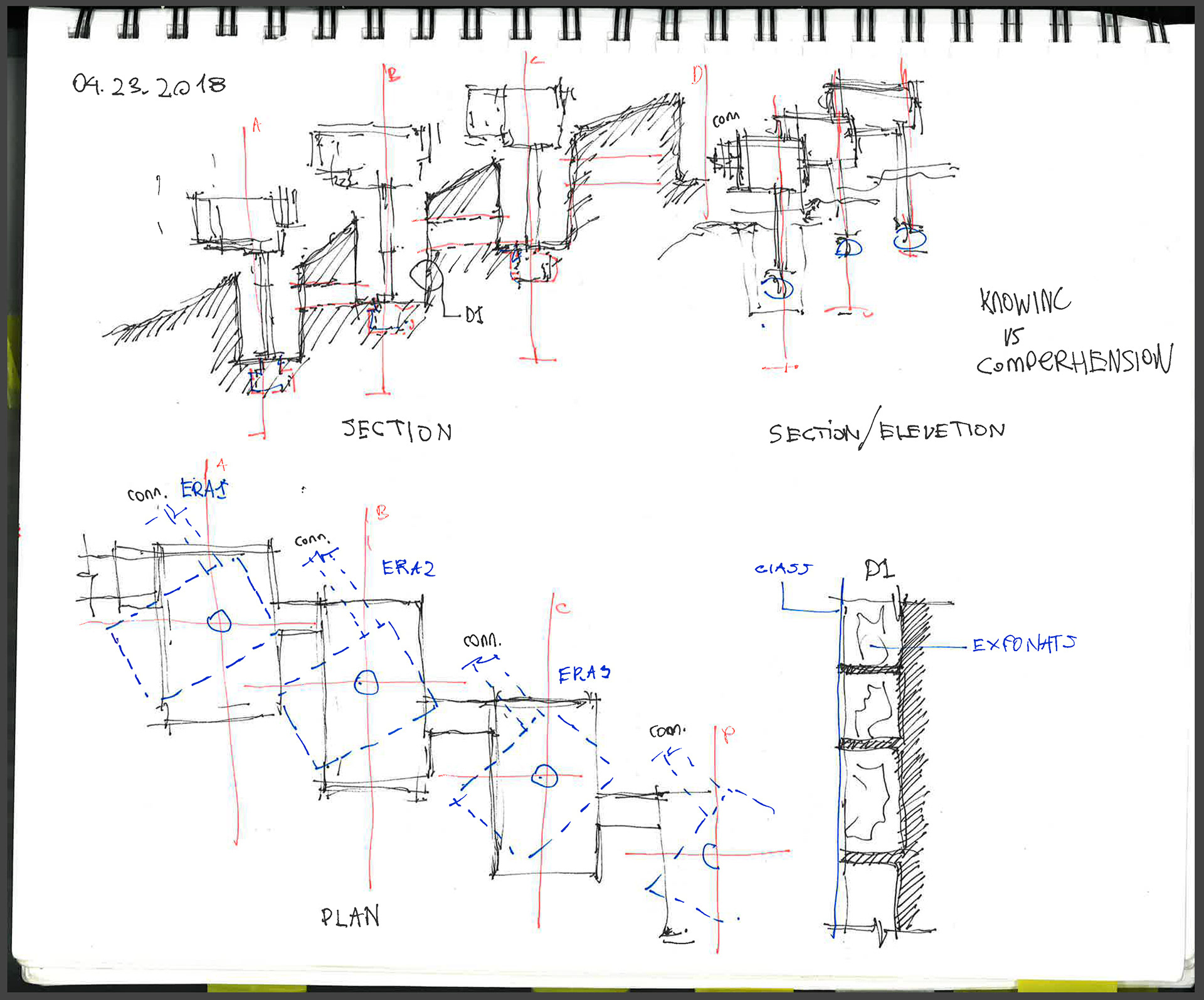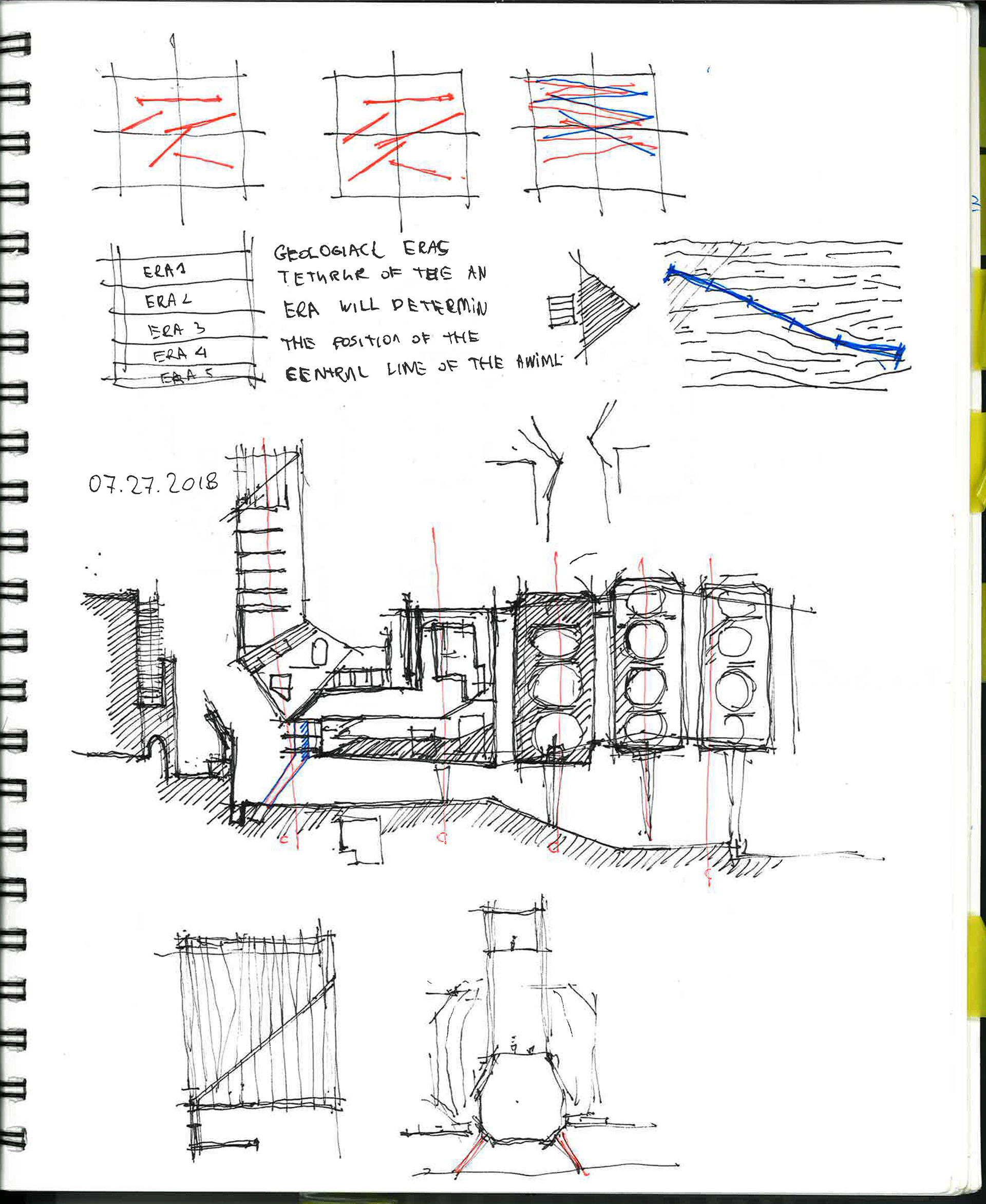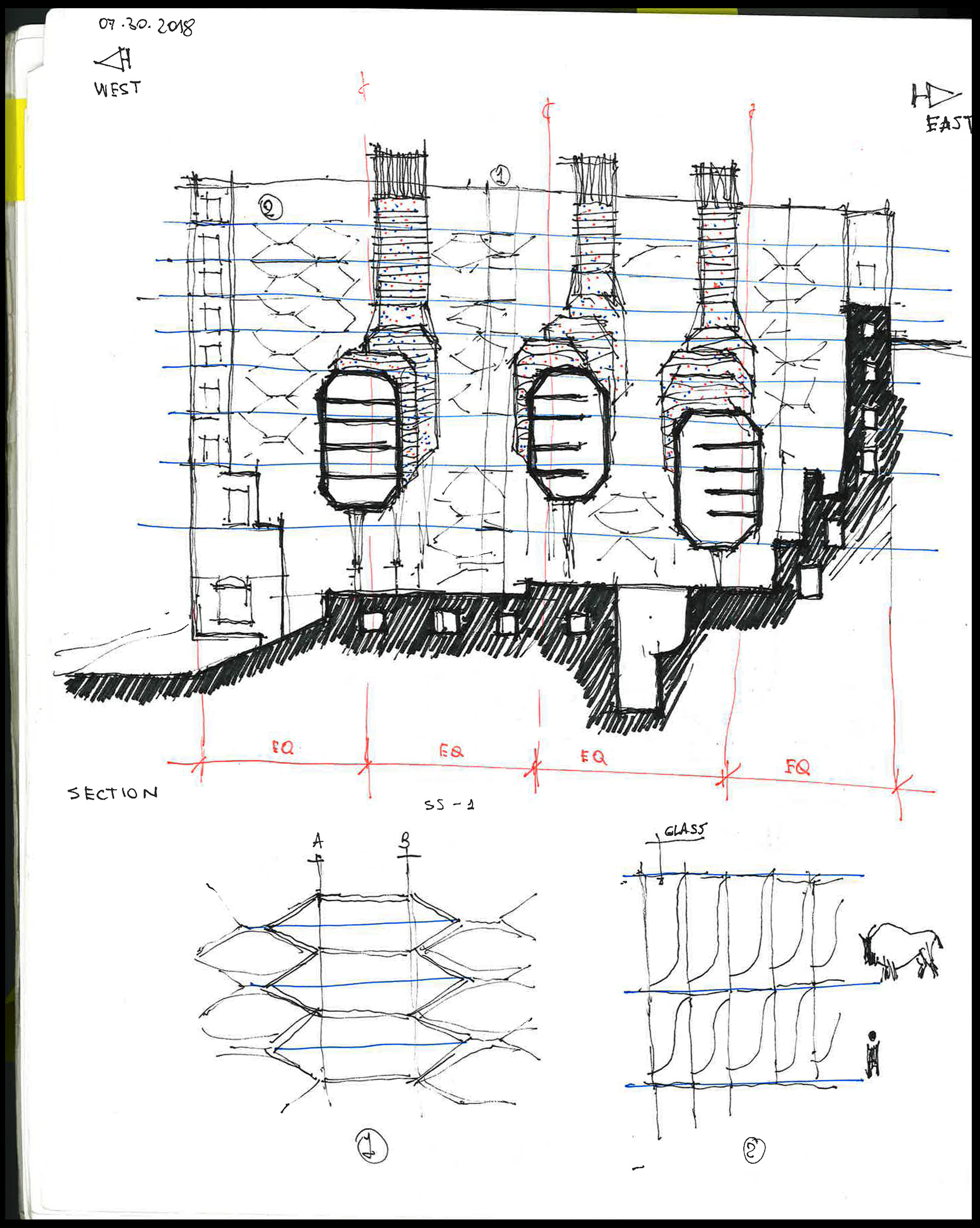THE BISON CAMP
or
The Section of Positive Void
Vol 4, Chapter 1
Fall 2018
The drawings, the section of positive void, is the one the most impart drawings in the project’s development. It is where the core narrative of the project, the biological “Danteum” first reveals it formal qualities. As mentioned before it is based on Vol 1 diagram and structured accordingly.

IMG 1: Old sketches - Section

IMG 2: Old sketches - Section

IMG 3: Old sketches

IMG 4: Formal studies of "thresholds"
Firsthand, I started exploring, or rather repeating the old diagrammatic characteristic of my older schemes (IMG 1, 2, 3, 4). However, I quickly departed from this type of exercise and moved on to more abstract and rational exercises.

IMG 5: Spatial progression diagram - Section

IMG 6: Spatial progression diagram - Plan

IMG 7: Spatial progression diagram - Section
The vertical descending signifies a travel from our era into the era where the only the once existed here (IMG 5, 6, 7). Its horizontal progression fallows the narrative of historical events that once took place in the prairies. The destination is the Dome of Our Departure (see Vol 5 for more details). There are “transition” thresholds between the eras, where the pure assumption takes place through an irrational formal, light and sound manipulations.

IMG 8: Descending stairs behind the shell connecting to the chambers

IMG 9: "Out becoming" the highest point the project representing the highest point our mind
The highest point of the section the Theater of Our becoming, (IMG 8, 9) which diagrammatically corresponds the Vol 1 drawing. From here one can observe what we the whole project. This where one can the how our myth, the human myth incarnates into a design and becomes structural logic for the architectural tectonics.

IMG 10: Section

IMG 11: Plan
The very first finalized section and plan drawing showing the placement of the future chambers and their arrangement (IMG 10, 11). At this point, the shapes the chambers were still quite neutral and had not yet acquired any formal resembles of any corresponding animal skulls.
It is set into the ground, compositionally, as an “uncovering machine” to offer a full experience of human’s bio-cultural history, which lays dissolved under the ground. From era to era it takes one through the various historical events, described as chambers, that manifest into architectural spaces. Its anti tabula rasa spatial qualities run everywhere.

IMG 12: Skull arrangement

IMG 13: Skull arrangement

IMG 14: Approximation of the natural shapes of skulls (Study)
The study to find a basis for the future formal exploration of chambers had taken me through a long painstaking process, which eventually led me to pick the skulls of the prairie animals for the formal studies (IMG 12, 13, 14).
The introduction of the skull, as the source for formal manipulations, happened due to their cultural (symbolic) and biological significance as well as their vast formal potential too.
The sage grouse – an Iconic bird for prairies (IMG 15, 18).
The coyote – the deity for many indigenous cultures and the key animal for biodiversity (IMG 16, 17).
The bison – single most iconic animal on prairies and in the whole continent. It is an ontological part of the prairies, without which it can’t be fully imagined (IMG 19)

IMG 15: Coyote

IMG 16: Sage Grouse

IMG 17: Sage Grouse

IMG 18: Coyote

IMG 19: Bison
IMG 20: Fitting skulls into the proportionally equal spaces.
IMG 21: The final condition
Previous Volumes